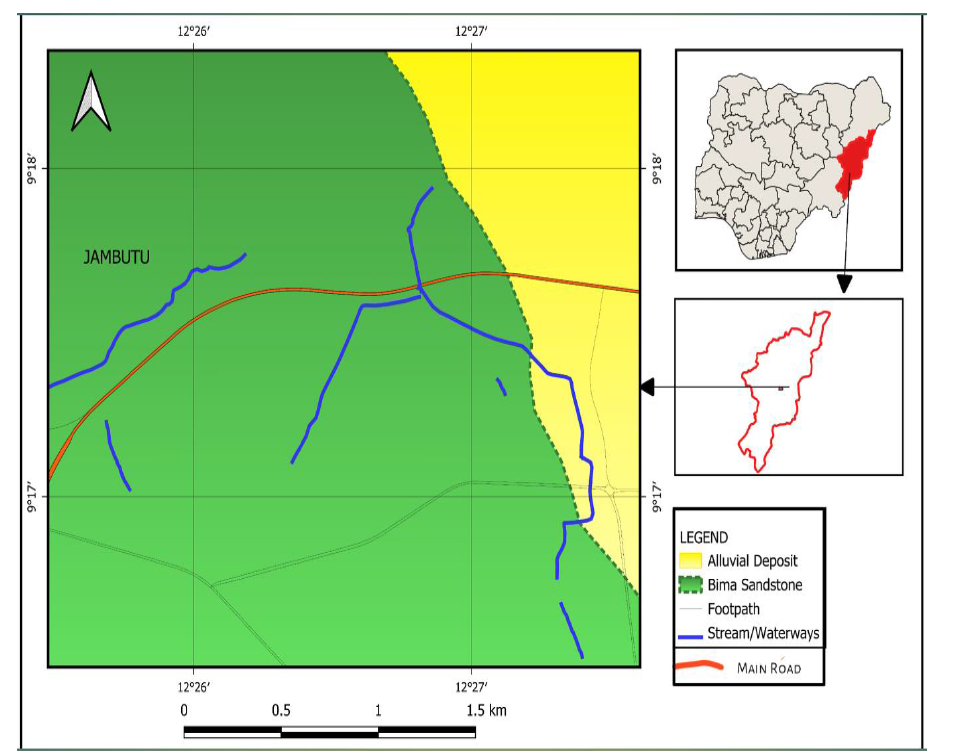Geotechnical Investigation of Road Pavement Failure along the Mubi Bypass Road, Jambutu, Jimeta, Yola, Adamawa State
Keywords:
Geotechnical method, Subsurface layer, Strength parameters, Road pavement failureAbstract
The persistent failure of road pavements manifesting as severe cracks, potholes, partial or complete collapse has left residents of communities along the Mubi Bypass Road in Jambutu in a highly distressed and disrupted condition. A geotechnical investigation was conducted to determine the causes of road pavement failure within the study area. Particle size distribution analysis revealed a predominance of fines (25.9–30.8%) and sand (59.5–64%), suggesting the presence of silty clay and silty sand. Atterberg limits indicated low plasticity, with liquid limits ranging from 20.0–23.2%, plasticity index between 20–23.2%, and shrinkage limits from 1.79–2.50%. The plastic limit was largely 0%, further confirming low plasticity soils. Specific gravity values ranged from 2.5–2.54 in failed sections and 2.29–2.51 in stable sections. Compaction characteristics showed slightly lower maximum dry densities in failed sections (2.09–2.2 g/cm³) compared to stable ones (2.19–2.2 g/cm³), with similar optimum moisture contents (8.0–8.6%). California Bearing Ratio (CBR) results demonstrated a significant drop in strength under soaked conditions. Soaked CBR values ranged from 53.9–91.1% in failed sections and 17.7–51.4% in stable sections, while unsoaked values ranged from 88.3–125.4% and 36.2–59.3% respectively. This confirmed a strong influence of moisture on subgrade strength and stability. The study attributes pavement failure to weak subsurface materials, specifically incompetent silty clay and silty sand, compounded by poor drainage and the flood-prone nature of the study area. It is recommended that effective drainage systems and soil stabilization measures be implemented. These findings provide essential guidance for the rehabilitation of existing pavements and the design of new roads.





